Jayson Tatum has been touted as one of the nation's top prospects since early in his high school career. With an NBA-caliber frame, fluid athleticism and an overall refined skill set (thanks to long hours with well-regarded player development coach Drew Hanlen), Tatum was on the radar already as a 14-year-old, playing 18 minutes per game at the 2013 FIBA U16 Americas. An important contributor to USA Basketball at the U17 World Championship in 2014 and the U19 World Championship in 2015, Tatum had 19 games of FIBA experience under his belt by the time he as 17. Nike Hoop Summit, Jordan Brand Classic, and McDonald's All-American game invites followed shortly after, as did a commitment to Duke for Missouri's Mr. Basketball.
During his gradual rise to stardom, Tatum was rivaled by Josh Jackson, a USA Basketball teammate (at all the aforementioned events) and friendly foe. With contrasting styles of play and personalities, Jackson and Tatum were constantly compared to each other. Jackson, the somewhat brash athlete with a more rigid skill set, and Tatum, the more introverted, smooth scorer with a refined game. It's only fitting that Tatum (RSCI #3) and Jackson (RSCI #1) may very well go back to back in the 2017 NBA Draft. With steady differences in style of play and mentality, the Jackson versus Tatum competition has been alive and well from the start.
Then there's Jonathan Isaac, who never made played any FIBA competitions for USA Basketball. A former 6'6 guard from the Bronx, Isaac's rise came late, as he sprouted to 6'10, started to gain steam on the EYBL circuit, and shipped off to IMG Academy in Florida. Isaac wasn't the star of the Nike Hoop Summit game or the headliner of the Jordan Brand Classic. As is his approach at times, the immensely talented, versatile forward somewhat lingered in the background, showing you glimpses of what he could become in time - a likely top 10, or even top 5 draft pick.

So who is the best prospect of the three? How do they differ? With the 6' 8+ forward becoming arguably the most important position in the current NBA, we take an in-depth look at how Jackson, Tatum, and Isaac compare and how they project at the NBA level.

Jayson Tatum - Polished Scorer
The St. Louis native is the most polished scorer of the bunch, with stellar footwork, excellent touch 18 feet in, and a mid-post/back to basket game that rivals some NBA vets. Hard jab-step pull-ups, rocker-steps, side-steps, turnarounds, Dirk fallaways, quick spins, you name it, Tatum likely has it in his arsenal. The 6'8 combo forward scored 1.03 points per possession on 33 post up possessions, first in the NCAA among high major players with at least 30 attempts. This is where Tatum's immediate value lies. While his game doesn't completely fit the pace and space style, the majority of teams are aiming to employ, there's a lot of value in Tatum's one-on-one prowess inside the arc, especially if his team is able to invert the offense and surround him with shooters. He hasn't always been the most willing passer, as he has some ISO-heavy habits that date back to his high school days, but he has more than adequate vision, and could become an asset in that area as he learns to trust his teammates, a process we see happen gradually over the course of the season at Duke.
Although his sometimes-inefficient style (lifetime 49% from two and 30% from three) and old man game' aren't for everyone, the fact that Tatum has the frame and reach to play the four (where he played almost exclusively at Duke) for long stretches in today's NBA eases potential concerns about his offensive fit as a three. He doesn't have the quickest release on his jumper, making the added time he'll have with fours closing out to him that much more valuable. Tatum converted 1.22 points per possessions on 37 unguarded' catch and shoot attempts, and only 0.85 PPP on 41 attempts when guarded', evidence that (like most players) he's better with time and space. From there, Tatum has the fluidity to attack closeouts in space, although he's not overly explosive, and has a tendency to settle for low percentage pull ups - 47th percentile off the dribble and only 10-of-35 on jumpers inside of 17 feet.
Tatum's swing skill is his 3-point shooting, an area where he showed promise throughout the year - namely a 6-of-7 game versus Virginia that featured two deep hang dribble pull-ups that he hadn't shown otherwise during the season. If he's able to step out and turn into a reliable 3-point threat, and a more instinctual ball-mover, he has the chance to become much more versatile in his already polished scoring attack.
More smooth than explosive and not overly advanced with his handle, Tatum figures to have an adjustment while at the three in terms of breaking down NBA level wing defenders and generating high percentage looks for himself or his teammates. He's a great isolation player (22.8% of his offense, 70th percentile), but he's still very green in his pick and roll play (4.4% of his offense, 0.682 PPP), as he's not going to generate a ton of offense out of ball screens at this stage of his career.
On the other side of the ball, Tatum's defensive intensity and progression physically will go a long way in determining how many minutes he is actually be able to play at the four. With a picturesque frame up top (but narrow in his lower body), an 8'10.5 standing reach and impressive instincts to boot, Tatum has the ability to rebound his position and at least provide some resistance as an interior defender, while moving his feet on the perimeter, even versus switches. An adequate wing defender when fully engaged, Tatum's intensity has to be at full throttle to bring enough to the table on the glass and on the interior.
Tatum is the most polished forward prospect of the three, and likely has the highest floor, as there's infinite value in a 6'8 combo forward with a great frame, solid length, an advanced isolation package, and a developing outside game. Tatum may not be the athlete that Josh Jackson, is or the versatile defender that Jonathan Isaac is, but at the very least, he projects as a polished scorer and longtime NBA starter with All-Star upside, if his perimeter game continues to evolve.
The St. Louis native is the most polished scorer of the bunch, with stellar footwork, excellent touch 18 feet in, and a mid-post/back to basket game that rivals some NBA vets. Hard jab-step pull-ups, rocker-steps, side-steps, turnarounds, Dirk fallaways, quick spins, you name it, Tatum likely has it in his arsenal. The 6'8 combo forward scored 1.03 points per possession on 33 post up possessions, first in the NCAA among high major players with at least 30 attempts. This is where Tatum's immediate value lies. While his game doesn't completely fit the pace and space style, the majority of teams are aiming to employ, there's a lot of value in Tatum's one-on-one prowess inside the arc, especially if his team is able to invert the offense and surround him with shooters. He hasn't always been the most willing passer, as he has some ISO-heavy habits that date back to his high school days, but he has more than adequate vision, and could become an asset in that area as he learns to trust his teammates, a process we see happen gradually over the course of the season at Duke.
Although his sometimes-inefficient style (lifetime 49% from two and 30% from three) and old man game' aren't for everyone, the fact that Tatum has the frame and reach to play the four (where he played almost exclusively at Duke) for long stretches in today's NBA eases potential concerns about his offensive fit as a three. He doesn't have the quickest release on his jumper, making the added time he'll have with fours closing out to him that much more valuable. Tatum converted 1.22 points per possessions on 37 unguarded' catch and shoot attempts, and only 0.85 PPP on 41 attempts when guarded', evidence that (like most players) he's better with time and space. From there, Tatum has the fluidity to attack closeouts in space, although he's not overly explosive, and has a tendency to settle for low percentage pull ups - 47th percentile off the dribble and only 10-of-35 on jumpers inside of 17 feet.
Tatum's swing skill is his 3-point shooting, an area where he showed promise throughout the year - namely a 6-of-7 game versus Virginia that featured two deep hang dribble pull-ups that he hadn't shown otherwise during the season. If he's able to step out and turn into a reliable 3-point threat, and a more instinctual ball-mover, he has the chance to become much more versatile in his already polished scoring attack.
More smooth than explosive and not overly advanced with his handle, Tatum figures to have an adjustment while at the three in terms of breaking down NBA level wing defenders and generating high percentage looks for himself or his teammates. He's a great isolation player (22.8% of his offense, 70th percentile), but he's still very green in his pick and roll play (4.4% of his offense, 0.682 PPP), as he's not going to generate a ton of offense out of ball screens at this stage of his career.
On the other side of the ball, Tatum's defensive intensity and progression physically will go a long way in determining how many minutes he is actually be able to play at the four. With a picturesque frame up top (but narrow in his lower body), an 8'10.5 standing reach and impressive instincts to boot, Tatum has the ability to rebound his position and at least provide some resistance as an interior defender, while moving his feet on the perimeter, even versus switches. An adequate wing defender when fully engaged, Tatum's intensity has to be at full throttle to bring enough to the table on the glass and on the interior.
Tatum is the most polished forward prospect of the three, and likely has the highest floor, as there's infinite value in a 6'8 combo forward with a great frame, solid length, an advanced isolation package, and a developing outside game. Tatum may not be the athlete that Josh Jackson, is or the versatile defender that Jonathan Isaac is, but at the very least, he projects as a polished scorer and longtime NBA starter with All-Star upside, if his perimeter game continues to evolve.
Jonathan Isaac - Modern Role Starter
Isaac is a small-ball heavy, defensive-oriented coach's dream. Despite his slight frame, at 6' 11 with the reach of many NBA centers (9' 0.5), and the feet of a two guard, Isaac has the defensive versatility to check at least four positions, maybe even stealing some minutes at the 5 once he fills out.
The late bloomer can pick up a point guard 94 feet and make him work, chase a wing shooter around screens, keep an isolation scorer in front and finish with a hand contest, cover ground on closeouts, and rotate off the ball to protect the rim with impressive verticality. He checked everyone from Jayson Tatum to Justin Jackson to Zach LeDay this past season in the ACC, and played much tougher than his 205-pound body would suggest. In the switch-mandatory NBA, Isaac is a perfect fit, and he plays with excellent energy on the defensive gass as well - 9.3 per 40 minutes. He's active, fluid, rangy, and very willing to play whatever role he needs to for the betterment of the team.
Where Isaac's upside may be slightly limited is in his offensive aggression, or lack thereof. On paper, he's a star in the making. He can grab and go, handle it well for his size, make a spot three, get to a mid-range pull up off the bounce, attack a closeout, and make a mid-post turnaround. He showed that in a vacuum, he's physically capable of doing each of these things, which gives you hope that with a bigger role, you'll be able to rely more on each area with consistency.
There is some fool's gold in his offensive production, however. Isaac is very risk averse offensively (396 used possessions compared to Jackson's 695 and Tatum's 576), far too happy to fade into the background, defend, rebound, and take an occasional open shot. Ball-dominant players like Dwayne Bacon and Xavier Rathan-Mayes certainly didn't encourage his aggression, but Isaac has often lacked a degree of confidence you'd like to see from a potential top-five pick. He's a worker who will undoubtedly compete, but his sometimes-passive nature on the offensive end makes it hard to project him as more than a third or fourth option on a winning team.
While he can do a little bit of everything, Isaac lacks a degree of skill to play on the wing full-time, like some may project him. He stays in his lane, but doesn't have the most natural feel for the game, and isn't very advanced out of ball-screens at this stage of his career. He also still has to prove himself as a shooter from NBA range. He is a lifetime 31.7% from three and shot only 16.7% from three in March and 21.4% from three in December.
Simply put, Isaac projects more as a hyper-elite role-playing starter who can switch everything, defend the opponent's best perimeter player, protect the rim off the ball, defensive rebound, likely make enough jumpers to keep the defense honest, and play within himself in the half court. There's a ton of value in what Isaac brings to the table. He's a unique prospect and he's a perfect piece on a winning team, while fitting the modern NBA to a tee. If the team that drafts him is expecting him to get up 15-20 shots a night, score prolifically from all three levels and shine in crunch time when his team needs a bucket, they may be disappointed, however. But what Isaac brings to the table isn't easy to find, and if he's able to incrementally gain more offensive confidence with a gradual rise in responsibility, he certainly has a chance to develop into more than just an elite role starter in time.
Isaac is a small-ball heavy, defensive-oriented coach's dream. Despite his slight frame, at 6' 11 with the reach of many NBA centers (9' 0.5), and the feet of a two guard, Isaac has the defensive versatility to check at least four positions, maybe even stealing some minutes at the 5 once he fills out.
The late bloomer can pick up a point guard 94 feet and make him work, chase a wing shooter around screens, keep an isolation scorer in front and finish with a hand contest, cover ground on closeouts, and rotate off the ball to protect the rim with impressive verticality. He checked everyone from Jayson Tatum to Justin Jackson to Zach LeDay this past season in the ACC, and played much tougher than his 205-pound body would suggest. In the switch-mandatory NBA, Isaac is a perfect fit, and he plays with excellent energy on the defensive gass as well - 9.3 per 40 minutes. He's active, fluid, rangy, and very willing to play whatever role he needs to for the betterment of the team.
Where Isaac's upside may be slightly limited is in his offensive aggression, or lack thereof. On paper, he's a star in the making. He can grab and go, handle it well for his size, make a spot three, get to a mid-range pull up off the bounce, attack a closeout, and make a mid-post turnaround. He showed that in a vacuum, he's physically capable of doing each of these things, which gives you hope that with a bigger role, you'll be able to rely more on each area with consistency.
There is some fool's gold in his offensive production, however. Isaac is very risk averse offensively (396 used possessions compared to Jackson's 695 and Tatum's 576), far too happy to fade into the background, defend, rebound, and take an occasional open shot. Ball-dominant players like Dwayne Bacon and Xavier Rathan-Mayes certainly didn't encourage his aggression, but Isaac has often lacked a degree of confidence you'd like to see from a potential top-five pick. He's a worker who will undoubtedly compete, but his sometimes-passive nature on the offensive end makes it hard to project him as more than a third or fourth option on a winning team.
While he can do a little bit of everything, Isaac lacks a degree of skill to play on the wing full-time, like some may project him. He stays in his lane, but doesn't have the most natural feel for the game, and isn't very advanced out of ball-screens at this stage of his career. He also still has to prove himself as a shooter from NBA range. He is a lifetime 31.7% from three and shot only 16.7% from three in March and 21.4% from three in December.
Simply put, Isaac projects more as a hyper-elite role-playing starter who can switch everything, defend the opponent's best perimeter player, protect the rim off the ball, defensive rebound, likely make enough jumpers to keep the defense honest, and play within himself in the half court. There's a ton of value in what Isaac brings to the table. He's a unique prospect and he's a perfect piece on a winning team, while fitting the modern NBA to a tee. If the team that drafts him is expecting him to get up 15-20 shots a night, score prolifically from all three levels and shine in crunch time when his team needs a bucket, they may be disappointed, however. But what Isaac brings to the table isn't easy to find, and if he's able to incrementally gain more offensive confidence with a gradual rise in responsibility, he certainly has a chance to develop into more than just an elite role starter in time.
Josh Jackson - The Wildcard
While Tatum and Isaac have fairly high floors - albeit for different reasons - Jackson is much more of a wild card. An edgy, explosive, often emotional prospect with an erratic jumper and a mentality that straddles the border of intensity and instability, Jackson is a bit of an enigma. When he's at his best, Jackson looks like a potential #1 pick, a star in the making. On a fairly small sample, the Michigan native shot 39%, 48% and 40% from beyond the arc in January, February, and March, respectively, knocking down jumpers off the dribble and the catch, despite his somewhat untraditional stroke. When he's shooting it well, Jackson doesn't have many holes. More of a 3/2 than Tatum, who is a 3/4, and Isaac, a four who can play occasional three and five, Jackson is explosive, has positional size, can handle in the open floor, has impressive vision on the move, and is the ultimate competitor defensively and on the glass.
There's a lot to like about Jackson, who could very will fill an Andre Iguodala type role as a defend-slash-and-pass style prospect on a competitive team. While not quite as wide shouldered or long as Iguodala, they certainly have some similarities in terms of explosiveness, passing ability, grit on the glass and defensive end, and overall versatility, despite not being the most gifted half court scorers.

Comparing their stats at the same age (Iguodala a sophomore, Jackson a freshman), Jackson was actually a more prolific and efficient scorer, more accurate shooter (small sample), and more productive in terms off ball defensive stat-stuffing, with both playing big roles on very competitive teams. Iguodala, a more gifted passer and ball-handler, appeared to have a more projectable spot-up stroke as well, despite his pedestrian 3-point shooting numbers. Although he's often reluctant from three nowadays, Iguodala is a career 34% 3-point shooter at the NBA level, and if Jackson is able to duplicate that, he could very well follow a similar career path as a high-level role-playing two-way starter who can playmake, attack in a straight line, and make enough spot threes to keep the defense honest.

Playing mostly the four (like Tatum and Isaac), Jackson actually showed a decent amount of shot creation prowess, despite his underwhelming isolation and pick and roll numbers. While not the most polished ball handler, he has good rise on his pull up jumper, and had some excellent moments versus NBA-level combo forwards like Miles Bridges of Michigan State. When Jackson is dialed in, he looks like an elite role-playing starter with considerable upside, especially given the level of intensity and fearlessness he plays with.
When Jackson's jumper isn't falling, however, (which was reportedly often the case during most of his private NBA workouts), he really struggles to score in the half court. He's fairly thin framed, not overly long, a bit rigid in terms of his breakdown off the dribble game, and not full of touch inside the arc. The former Jayhawk likes to live on the wild side, as well, which creates somewhat of a feast or famine product on the offensive end.
Jackson's lack of overall discipline shows up on the defensive end at times as well. While competitive and quick twitch, he likes to gamble or get out of position, and has trouble defending without fouling for stretches. The fact that he's not quite as tall/long as Isaac, or wide shouldered as Tatum may limit his ability to play extended minutes at the four. How does he score versus NBA wings if his shot isn't falling?
Overall, Jackson is going to defend, be athletic in transition, crash the glass, move off the ball, and facilitate at an above average rate for his position. But even with all that, it's hard to predict what Josh Jackson NBA fans will get on a nightly basis on the offensive end. He deserves credit for the clip at which he shot it at Kansas. His 56% free throw percentage (often a great indicator of future 3-point percentage) is alarming, but that shouldn't retract from the number of tough shots he made at Kansas, and prior to his time in Lawrence.
Josh Jackson is truly a wildcard in this draft, apparent by the wide variety of opinions about him among scouts, executives and NBA draft pundits. Some see an explosive competitor with the potential to become a star in his own right, others peg him as a non-shooter with average length and an erratic style of play. Jackson may not be as safe as guys like Tatum or Isaac, but if he can be a passable shooter, and continue to channel his emotion in a positive way, he could be one of the best prospects to come out of this draft.
So who is the best prospect among the three? They're all so different, it really depends on what a team is looking for. If a GM wants a polished scorer and long-time NBA starter who could very well average at least 20 points per game for the majority of his career, Tatum is the guy. If he wants a multi-positional defender who rebounds, protects the rim, switches everything, stays in his lane, and can make a spot three, Isaac is the one. If he wants a ferocious competitor with game-changing athleticism, defensive grit, versatility offensively and a chance to be more than just a role-playing starter, Jackson is the guy.
That's the beauty of these three as a group - they all bring something different to the table. While the guards have gotten most of the attention, and rightfully so, Tatum, Isaac and Jackson all have very bright futures, each bringing something different to whatever NBA team drafts them.
While Tatum and Isaac have fairly high floors - albeit for different reasons - Jackson is much more of a wild card. An edgy, explosive, often emotional prospect with an erratic jumper and a mentality that straddles the border of intensity and instability, Jackson is a bit of an enigma. When he's at his best, Jackson looks like a potential #1 pick, a star in the making. On a fairly small sample, the Michigan native shot 39%, 48% and 40% from beyond the arc in January, February, and March, respectively, knocking down jumpers off the dribble and the catch, despite his somewhat untraditional stroke. When he's shooting it well, Jackson doesn't have many holes. More of a 3/2 than Tatum, who is a 3/4, and Isaac, a four who can play occasional three and five, Jackson is explosive, has positional size, can handle in the open floor, has impressive vision on the move, and is the ultimate competitor defensively and on the glass.
There's a lot to like about Jackson, who could very will fill an Andre Iguodala type role as a defend-slash-and-pass style prospect on a competitive team. While not quite as wide shouldered or long as Iguodala, they certainly have some similarities in terms of explosiveness, passing ability, grit on the glass and defensive end, and overall versatility, despite not being the most gifted half court scorers.

Comparing their stats at the same age (Iguodala a sophomore, Jackson a freshman), Jackson was actually a more prolific and efficient scorer, more accurate shooter (small sample), and more productive in terms off ball defensive stat-stuffing, with both playing big roles on very competitive teams. Iguodala, a more gifted passer and ball-handler, appeared to have a more projectable spot-up stroke as well, despite his pedestrian 3-point shooting numbers. Although he's often reluctant from three nowadays, Iguodala is a career 34% 3-point shooter at the NBA level, and if Jackson is able to duplicate that, he could very well follow a similar career path as a high-level role-playing two-way starter who can playmake, attack in a straight line, and make enough spot threes to keep the defense honest.

Playing mostly the four (like Tatum and Isaac), Jackson actually showed a decent amount of shot creation prowess, despite his underwhelming isolation and pick and roll numbers. While not the most polished ball handler, he has good rise on his pull up jumper, and had some excellent moments versus NBA-level combo forwards like Miles Bridges of Michigan State. When Jackson is dialed in, he looks like an elite role-playing starter with considerable upside, especially given the level of intensity and fearlessness he plays with.
When Jackson's jumper isn't falling, however, (which was reportedly often the case during most of his private NBA workouts), he really struggles to score in the half court. He's fairly thin framed, not overly long, a bit rigid in terms of his breakdown off the dribble game, and not full of touch inside the arc. The former Jayhawk likes to live on the wild side, as well, which creates somewhat of a feast or famine product on the offensive end.
Jackson's lack of overall discipline shows up on the defensive end at times as well. While competitive and quick twitch, he likes to gamble or get out of position, and has trouble defending without fouling for stretches. The fact that he's not quite as tall/long as Isaac, or wide shouldered as Tatum may limit his ability to play extended minutes at the four. How does he score versus NBA wings if his shot isn't falling?
Overall, Jackson is going to defend, be athletic in transition, crash the glass, move off the ball, and facilitate at an above average rate for his position. But even with all that, it's hard to predict what Josh Jackson NBA fans will get on a nightly basis on the offensive end. He deserves credit for the clip at which he shot it at Kansas. His 56% free throw percentage (often a great indicator of future 3-point percentage) is alarming, but that shouldn't retract from the number of tough shots he made at Kansas, and prior to his time in Lawrence.
Josh Jackson is truly a wildcard in this draft, apparent by the wide variety of opinions about him among scouts, executives and NBA draft pundits. Some see an explosive competitor with the potential to become a star in his own right, others peg him as a non-shooter with average length and an erratic style of play. Jackson may not be as safe as guys like Tatum or Isaac, but if he can be a passable shooter, and continue to channel his emotion in a positive way, he could be one of the best prospects to come out of this draft.
So who is the best prospect among the three? They're all so different, it really depends on what a team is looking for. If a GM wants a polished scorer and long-time NBA starter who could very well average at least 20 points per game for the majority of his career, Tatum is the guy. If he wants a multi-positional defender who rebounds, protects the rim, switches everything, stays in his lane, and can make a spot three, Isaac is the one. If he wants a ferocious competitor with game-changing athleticism, defensive grit, versatility offensively and a chance to be more than just a role-playing starter, Jackson is the guy.
That's the beauty of these three as a group - they all bring something different to the table. While the guards have gotten most of the attention, and rightfully so, Tatum, Isaac and Jackson all have very bright futures, each bringing something different to whatever NBA team drafts them.





















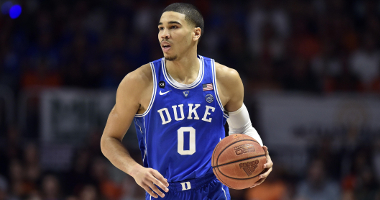

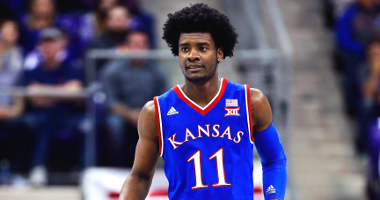

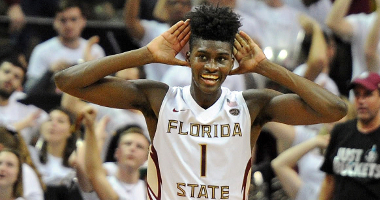

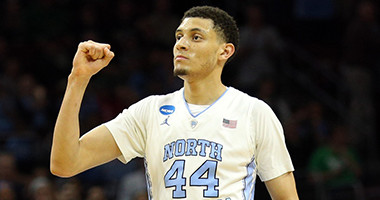

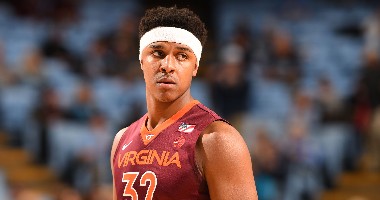

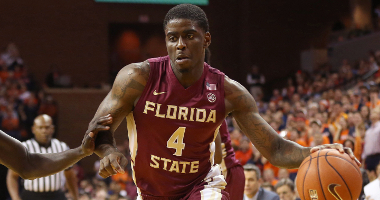

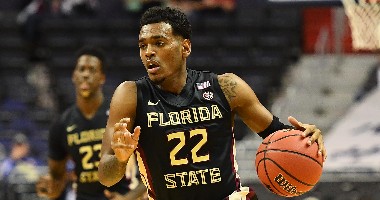



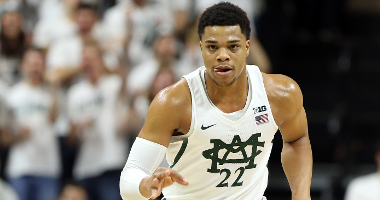





Comments